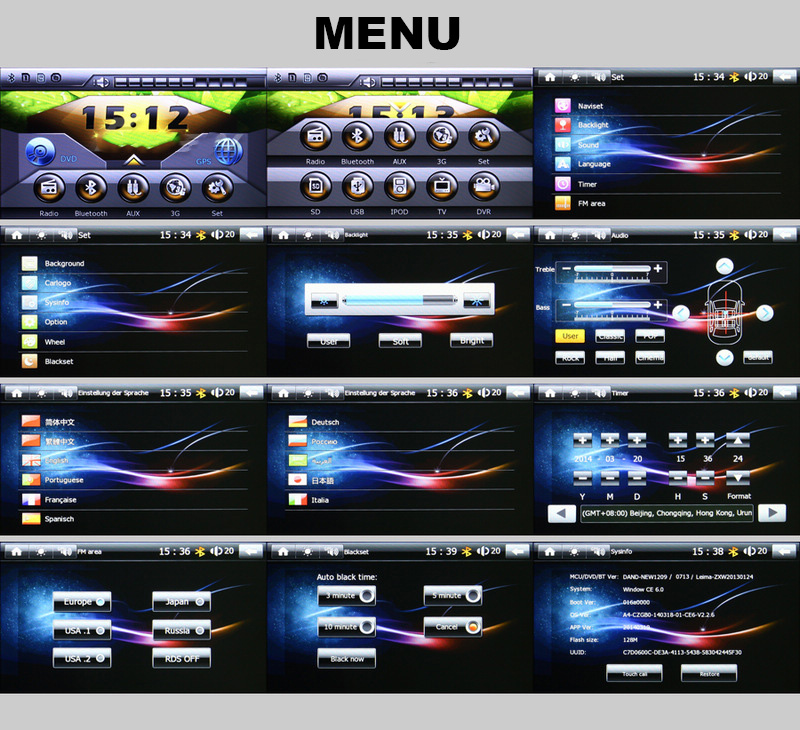2020. 3. 18. 19:37ㆍ카테고리 없음
@CESYSGEN IF CEMODULESBTHCSRHKEYLOCALMACHINESoftwareMicrosoftBluetoothTransportsBuiltIn1'driver'='bthcsr.dll'flags'=dword:1'name'='COM2:'baud'=dword:1c200'resetdelay'=dword:300; @CESYSGEN ENDIFYou'll have to adjust the baudrate and COM port to match your configuration. Debug ZonesHKEYLOCALMACHINEDebugZones'BTD'=dword:E404Unfortunately the debug messages did not give any clue as to why it did not want to load the driver I specified.
In the end I decided to just select the Universal Loadable Driver (SYSGENBTH) in the catalog and deselect everything else, just to get rid of all other unrelated Bluetooth messages. To my surprise all of a sudden the driver did load!I copied the reginit.ini from the release folder to a temporary folder, selected all Bluetooth components again and rebuilt the kernel. I then compared the reginit.ini of the kernel with only the universal loader component selected with the reginit of the kernel with all Bluetooth components selected. That way I discovered the culprit component was the Bluetooth Profile Management APIs (SYSGENBTHBTHUTIL) component.This component adds the following registry settings. Hi Michel,Many thanks for this tip, it helps me.I have a question regarding the BTD service. My BT chip have to be configured via UART (MAC address.). In the previous versions of WinCE (5 & 6), before sending these settings, we was able to stop the BTD service by calling a DeviceIoControl on BTD0: with IOCTLSERVICESTOP on 'card'.
There were also a public sample named BtLoader which was implementing this feature.In WEC7, this sample does not exist anymore and the service seems to be not stoppable.Do you have any lead to stop this service?Thank you in advance.Olivier. Michael,Great post!Although, I am confused as I am not sure where the CEMODULESBTHCSR,CEMODULESBTD and OSSVCSMODULESBTHUTILare? Are they created by the catalog files selected?I am using a Laird BTM511 (CSR v.5 chip) Bluetooth development board that has a FTDI USB to RS232 converter chip. The platform I am building with is a Freescale i.MX53 Quick Start Board and the Adeneo BSP for the board.
I have also loaded in my subproject folder of my OS design the FTDI Virtual COM Port Driver for ARM.I am curious if this method above is going to work for me in using a external module. I changed the above com port to 0 as that is what the USB coverter chip is configured for and to use 9600 baud. I would like to use the Silverlight For Embedded Control Panel (CtlPnl2.exe) in my Silverlight Project. Will your method still work?. Hi,CEMODULES defines are set by sysgen (in ceconfig.h) according to the modules you selected in the catalog.All that I described will still work with the FTDI driver.
You just have to make sure the FTDI driver loads before the Bluetooth components (so set the 'Order' value of the Bluetooth components to load after the 'Order' value of the USB stack).You may be interested in our new module the Opal, based on the iMX53 from Freescale. It's got Bluetooth already on-board. More information about the Opal will be released soon, but if you want some preliminary documentation then please contact me directly (or through the contact page). Hi Michel,I found this blog post very informative. I am currently trying to add Bluetooth support to a WEC7 iMX53 platform using a WT21 HCI Bluetooth module from BlueGiga.
Free Download Windows Ce 6.0

I followed all your advice but I still can't tell if the Bluetooth driver is loading - I see no messages relating to BTD from the kernel debug. I've checked the settings in the registry and they all seem to be in order.Could you tell me how you determined the driver was loading? Or if there any basic test applications I can run to check it's functioning? I did select the Silverlight BT settings panel from my OS catalogue but it doesn't appear anywhere on my desktop or control panel.One final question, could you tell me what the various values for the 'flags' parameter in HKEYLOCALMACHINESoftwareMicrosoftBluetoothTransportsBuiltIn1 represent? I've tried searching online but haven't managed to find a description. I ask because by default the WT21 module configures itself to use EVEN parity and I'm not sure how to tell Windows is should use even parity when communicating with the module.Many Thanks,Simon.
Issue / QuestionHow to disable Microsoft (MS) Bluetooth stack? Applicable ToWorkabout Pro 4MC67NA PremiumMC75AMC3200MC9500-KMC9200MC9190-GMC55A0VC70N0 Resolution / AnswerAlmost all Zebra Windows CE or Windows Mobile device supports both the Microsoft (MS) Bluetooth stack and the Stonestreet One (SS1) Bluetooth stack (BTExplorer).Only one Bluetooth stack can be used at a time. By default, the Microsoft Bluetooth stack is enabled. A registry key on the device can be modified to disable the MS stack and enable the SS1 stack.A. Using a registry editor, navigate to the following: HKEYLOCALMACHINESoftwareSymbolBluetoothEdit the following key: “SSStack”=dword:1where:0 = enable MS stack and disable SS1 stack (default)1 = enable SS1 stack and disable MS stackAfter setting the registry key, warm boot the device.B.
Bluetooth Driver For Windows Ce 6.0 Download
Create a registry file (.reg extension; example SS1.reg) with the following key: HKEYLOCALMACHINESOFTWARESymbolBluetooth'SSStack'=dword:1Copy the SS1.reg file unto the device Application partition then perform a cold boot.